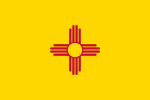Top-Rated Debt Collection Agency in Alaska
Efficient and Trustworthy Debt Collection in Alaska - No initial fees, pay only for results. Request a FREE Consultation or submit your claim now.

Unrivaled Success in Debt Collection: Why Debitura is Your Best Choice in Alaska
Your choice of a debt collection agency in Alaska couldn't get finer than Debitura. With profound expertise in debt recovery, we cater to businesses in need of a holistic suite of services - from accounts receivables management to enforcement court proceedings. Our practical understanding of Alaska's debt collection regulations is our guarantee for offering you effective and efficient means to recover outstanding debts, making us your go-to solution. Lean on Debitura, turn your debts into decisive success.

Guiding Alaskan businesses through comprehensive debt recovery solutions.

Data-driven, personalized debt recovery in Alaska.

Harnessing a global force of 500+ debt collection professionals.

Achieving 87% debt recovery rate in Alaska effortlessly.
Key facts
- Debt Collection Laws: Governed by the Federal Fair Debt Collection Practices Act and the Alaska Unfair Trade Practices and Consumer Protection Act.
- Harassment and Deceptive Practices: Prohibited under Alaska's debt collection laws, including threats, false statements, and excessive contact.
- Contact Restrictions: Debt collectors cannot contact consumers at work or at unusual times without their agreement.
- Consumer Rights: Consumers can request debt collectors to stop contacting them and dispute the debt within 30 days of initial contact.
- Statute of Limitations: Three years for written and oral contracts, two years for injury cases, and six years for real property damage.
- Interest Rate Limits: Absent contract, the limit is 10.5%; with an express contract agreement, it's 5% over the legal rate.
- Late Payment Fees: No maximum late fee specified in Alaska, but a seven-day grace period is required.
- Wage Garnishment: Allowed by an action on an express or implied contract.
- Small Claims Limit: The limit in Alaska's District or Magistrate Court, Small Claims Docket is $10,000.
This guide is not legal advice and laws/rules may change; consult a qualified professional for personalized assistance. Use at your own risk.
Introduction to Debt Collection In Alaska
The process of recovering overdue payments owed by individuals or businesses, commonly known as debtors, is referred to as debt collection. It often involves third-party agencies known as debt collection agencies, collecting debts on behalf of the company or person to whom the debt is owed, who are known as creditors.
In the state of Alaska, like other parts of the United States, debt collection is a common practice utilized by businesses to maintain healthy cash flows. Understanding this process is crucial, not only for affected consumers but also for businesses who rely on steady revenue to stay afloat.
The key actors in the debt collection process are the debtor, the creditor, and the collection agency. The debtor is the person or entity that owes the money, while the creditor is the entity to whom the money is owed. When repayment of the debt doesn't happen as planned, creditors often turn to collection agencies as a last resort to recover their funds.
The Stages in Debt Collection
The process of debt collection generally takes place in three key stages: pre-legal, legal and debt enforcement.
The pre-legal stage is the first step in the debt collection process. Here, creditors typically make attempts to collect debts directly through letters, phone calls, or email communications. It's a less adversarial approach, intended to serve notice to the debtor about the overdue repayment while providing them an opportunity to fulfill their obligation or arrange a suitable repayment plan.
If the pre-legal collection attempts fail, then the situation escalates into the legal stage. In this phase, the creditor or collection agency can decide to file a lawsuit against the debtor. Legal remedies available to creditors in Alaska include wage garnishment, property liens, and bank account garnishment. But, it's important to note that there are legal protections in place for debtors, and certain processes have to be followed by the creditors.
The last stage is debt enforcement, which is basically the implementation of the judgements obtained in the legal stage. It may involve seizing the debtor's property or diverting a portion of their earnings to repay the debt. All these stages exist in an environment framed by specific laws and regulations that prioritize fairness and ensure all parties’ interests are protected.
In conclusion, comprehending the stages and the key participants in the debt collection process is vital for both debtors and creditors. It aids in maintaining respectful and lawful recovery practices within Alaska's debt collection landscape.
Debt Collection Laws In Alaska
In the United States, both federal and state laws regulate debt collection practices. Federally, the Fair Debt Collection Practices Act (FDCPA), the Fair Credit Reporting Act (FCRA), and the Telephone Consumer Protection Act serve as major regulatory mechanisms. These laws govern how collection agencies can impact credit ratings and set guidelines for communication with debtors. Simultaneously, the Consumer Financial Protection Bureau (CFPB) and the Federal Trade Commission (FTC) offer supervisory roles to ensure adherence to debt collection laws.
One of the most significant federal laws governing this area is the Fair Debt Collection Practices Act (FDCPA). The FDCPA's main provisions aim at protecting consumers from abusive, unfair, or deceptive practices by debt collectors. These prohibitions cover inappropriate harassment, the disclosure of a consumer's debts to a third party, and any inaccurate representation of the debt amount or legal status.
It is worth noting that these federal statutes not only dictate overall American policy but also help to shape individual state regulations. This, however, does not prevent individual states from creating unique laws that adapt to the distinctive financial circumstances of their residents. These regional regulations often present different guidelines, which are either stricter or more lenient than federal laws.
Overview of Alaskan Debt Collection Laws
Debt collection in Alaska is regulated under the Federal Fair Debt Collection Practices Act (FDCPA) and the Alaska Unfair Trade Practices and Consumer Protection Act. These laws aim to create a fair landscape between creditors and debtors by preventing the use of unfair and deceptive practices during the debt collection process. These laws do not exonerate the debtor from their financial obligation; instead, they seek to ensure the collection practices are humane and not oppressive to the debtor.
According to these laws, debt collectors in Alaska are prohibited from harassing or abusing consumers during the debt collection process. They cannot employ obscene language, use threats of violence, or indulge in repeated calls meant to annoy or harass the debtor. Equally, Alaska’s debt collection laws prohibit the usage of any false, misleading, or deceptive statements during the collection process. This includes falsely claiming legal action against a debtor or threatening to seize property or garnish wages without legal intent or authorization.
Additionally, the FDCPA stipulates timing and location restrictions over the contact between debt collectors and consumers. Collectors are disallowed to contact consumers at their workplaces if the employer has disclosed that such communication is prohibited. Furthermore, unless previously agreed with the consumer, collectors can’t reach out before 8:00 AM or after 9:00 PM.
Consumer Rights and Debt Validity
Alaskan law guarantees the right of consumers to demand an end to contact from debt collectors. Once a written request has been sent to the debt collector indicating their wish to cease communication, the collector must comply. That said, they may contact the consumer again to inform them of specific actions, such as lawsuit initiation. It is important to remember that this does not render the debt void.
Within five days of making initial contact, a debt collector is required to send the consumer written notification of the debt, including the amount and the creditor to whom the money is owed. This notification must include a validation notice that informs the customer of their right to dispute the debt within 30 days or face the debt’s validation by the debt collector. If within this period, the consumer disputes the debt or demands the original creditor's name and address, the debt collector must provide proof of the debt before continuing with the collection process.
When dealing with multiple debts for a single consumer, any payment received should be applied to the debtor's selected debt. Debt collectors in Alaska cannot apply the payment to a disputed debt.
In conclusion, both federal and Alaskan laws aim to protect consumers from inaccurate and aggressive debt collection practices. Understanding these rights allows consumers to undertake appropriate actions when dealing with debt collectors and ensure they are handled fairly during the debt collection process.
Risk Free Debt Collection
Upload your claim and get started with our 100% no-cure-no-pay collection solution.
The Debt Collection Process In Alaska
The debt collection process in Alaska begins with the comprehensive evaluation of the case, which includes a check to ensure that the debt is within the state's statute of limitations. The statute of limitations in Alaska is three years for written and oral contracts, two years for injury cases, and six years for real property damage. If the debt is valid and hasn't expired according to these terms, debtors proceed to the next phase.
During the pre-legal or amicable phase, debt collectors try to reach out to debtors to find an ideal solution. This could be through multiple channels like phone calls, mails, or even personal requests depending on the level of urgency.
However, it must be noted that contact restrictions in Alaska prohibit debt collectors from contacting consumers at their workplaces or during unusual hours without agreement. In addition, harassment and deceptive practices, such as threats or false statements, are also prohibited under Alaska's debt collection laws.
Legal Considerations and Actions
Following the pre-legal phase, the next integral stage is a thorough evaluation of the debt situation and the consideration of various legal aspects. One key assessment is to determine if the case is fit for small claims procedures.
The limit for a small claims case in Alaska's District or Magistrate Court, Small Claims Docket is $10,000. For disputes below this limit, small claims procedures might be the most efficient route. The good news is that ordinary citizens can handle these procedures without the need for a lawyer, making it a cost-effective solution for debt recovery.
However, if the debt amount surpasses the small claims limit, or if the complexity of the case requires legal expertise, a lawyer could initiate a legal debt collection process. This might take the form of filing a lawsuit against the debtor in court.
Post-Judgment Enforcement and Wage Garnishment
Once a judgment has been awarded by the court, this leads to the enforcement of debt. If the debtor still refuses to pay, the judgment creditor might consider strategies such as seizing the debtor's property or garnishing their wages.
In Alaska, wage garnishment is allowed as a means to collect debt through an enforced or implied contract. However, it must be noted that consumers have the right to request debt collectors to stop contacting them and dispute the debt within 30 days of the initial contact.
Finally, regarding interest rates on delayed payments, absent a contract, the limit is 10.5%, while it's 5% over the legal rate with an express contract agreement. There isn't a specified maximum late fee in Alaska, but a seven-day grace period is mandated.
In conclusion, the debt collection process in Alaska is well-structured and largely favors fair practices, ensuring that both debtors and creditors have their rights safeguarded. By understanding this process, individuals can not only protect themselves but ensure a more efficient, stress-free resolution to debt-related issues.
Statute of Limitations in Alaska
The Statute of Limitations is an important concept to understand when it comes to debt collection. Essentially, these are laws that put a time limit on how long collectors have to sue a debtor for an unpaid debt. Statutes of limitations are designed to ensure that legal proceedings are fair and timely, discouraging unnecessary prolonged disputes. In the realm of debt collection, it is important because it helps protect consumers from being sued over old or 'zombie' debts.
In the context of debt collection in Alaska, the statue of limitations is regulated under Alaska Stat. § 09.10.010 et seq. This regulation outlines the limitations period for different types of debts. Importantly, the statute of limitations timer is dependent on the type of debt and starts from the last date of activity on the account, such as the last payment made.
Limitations Period for Different Types of Debts in Alaska
In Alaska, the limitation period for written contracts is three years. This includes debt types like credit card debts and personal loans, where a written agreement exists between the debtor and the creditor. Similarly, the limitation period for oral contracts, where the agreement was verbal, is also three years. This might apply in situations where there was no formal contract but a verbal agreement to repay a debt.
When it comes to injury cases, the statute of limitations reduces to two years. That means if there was a debt incurred due to an injury, the creditor has only two years to take legal action towards debt collection. For property damage, the limitations period varies. For real property damages, the creditor has six years to take action. In contrast, for personal property damage, the clock shrinks to two years.
The limitation periods are strict. Once the statute of limitations period has passed, the debt is considered time-barred. This prevents a creditor from winning a lawsuit for the debt, protecting the debtor from legal action. However, it's important to note that the debt does not disappear, and non-legal collection actions may still continue.
Understanding the statute of limitations is crucial for debtors in Alaska. It provides an important defense in the instance of a lawsuit and promotes proactivity in handling debts. Always remember, managing your debt responsibly and seeking appropriate advice can potentially save you from falling victim to unnecessary legal action.
Interest Rates on Late Payments in Alaska
Interest in the context of debt collection refers to the cost of borrowing money, expressed as a percentage of the amount borrowed. Late payment interest, therefore, is a fee charged by the creditor when the borrower is late on a payment. The relevance of interest rates in debt collection cannot be over-emphasized, as they can significantly increase the overall cost of repayments.
In Alaska, there are explicit rules governing interest on late payments. These regulations not only protect debtors from exorbitant fees but also allow creditors to be compensated for delayed payments. Understanding these rules is crucial in navigating the debt collection landscape in Alaska.
An important consideration in analyzing interest rates is the legal limits on how much a creditor can charge. While these limits vary by state, many states' laws do not apply universally. Exceptions are often made for certain types of credit or loans exceeding a specific amount. National banks, for example, may charge the highest rate allowed in their home state, regardless of where the borrower resides, as a result of the High Court's Marquette National Bank v. First of Omaha Corp. decision.
Statutory Interest Rate Limits in Alaska
Where there's no contract, Alaska limits interest rates to 10.5 percent. If an express contract agreement exists, the rate can extend to 5 percent over the legal rate. However, agreements with a principal amount greater than $25,000 are exempt from these limitations.
If a creditor charges unlawful interest, termed as usury, the debtor can recover double the usurious interest within two years. This ensures that creditors adhere to established limits and prevents the exploitation of the borrower.
Particularly interesting is the approach to interest rates on judgments, where rates are set at 3% above the 12th Federal Reserve District's discount rate on January 2nd of the year in which the judgment is entered. Exceptions exist if the action involves a contract, in which case the contract rate applies.
Understanding Usury Laws
Traditionally referred to as usury laws, these regulations either limit or ban interest rates for borrowed money. These laws date back to the Middle Ages, when they were inclusive of any money lending involving accrued interest. Over time, the term usury evolved to describe primarily excessive interest rates or deceptive lending practices.
To summarize, understanding the specifics of interest rates on late payments is vital for borrowers and creditors in Alaska. This knowledge ensures one can manage debt efficiently and avoid unnecessary financial strain that may arise from a lack of informed decisions.
Late Payment Fees in Alaska
When embarking on the journey of debt collection in Alaska, understanding the parameters around late payment fees is crucial. Late payment fees represent additional charges applied to a debt after its due date has passed. These fees matter significantly in debt collection because they can increase the owed amount and potentially pose legal complications if not handled in accordance with the state's regulations.
Late payment fees serve as a significant impetus for debtors to meet their payment responsibilities in a timely fashion. These fees not only serve to compensate the creditors for the delay in repayment, they also subtly encourage a culture of prompt payment, thereby reducing the probability of accounts receivable morphing into bad debts or uncollectible accounts. While advantageous to creditors, late payment fees, when rocketing uncontrollably, can become a sizeable hindrance for debtors, compounding their financial difficulties and sometimes making debt repayment almost impossible.
Therefore, the importance of late payment fee regulations within debt collection cannot be understated. In place to strike a balance between the rights of creditors and debtors, these regulations are pivotal in the fair and ethical conduct of debt collection processes.
Law Regarding Late Payment Fees in Alaska
In the context of Alaska, the rules around late payment fees are tailored to provide some leeway to both parties involved. Intriguingly, there is no statutory stipulation on the maximum late fee that one can charge in Alaska. This open-ended policy grants a degree of freedom to businesses when it comes to determining the size of their late payment charges. As a creditor, it's essential to set the late fee in a reasonable and justifiable manner, avoiding excessively high costs that could potentially spark legal issues and harm debtor relationships.
On the other side of the coin, the law does afford some protection to debtors through the provision of a grace period. In Alaska, businesses are mandated to allow a grace period of seven days from the original due date before applying late fees. This time buffer is designed to accommodate debtors who might be slightly tardy in their payments, preventing the immediate accumulation of extra charges.
Through this balanced approach, Alaska's regulations around late payment fees promote a fair environment for debt collection. While it's essential for businesses to use the leeway provided by these rules to safeguard their interests, it's equally important to enact these policies responsibly and ethically, creating a healthy ecosystem for credit transactions and debt collection in Alaska.
Small Claims Procedures in Alaska
Debt collection in Alaska often involves small claims procedures. These legal mechanisms typically offer an expedited and cost-effective route for parties owed money to recover their debt. The Small Claims Court functions under a more relaxed set of rules compared to other courts and allows plaintiffs to handle their cases without the need for legal representation.
Small Claims proceedings in Alaska are governed by the Alaska Statutes (Alaska Stat. §§ 22.15.040; 22.15.050) along with the Alaska District Court Rules of Civil Procedure (Rules 8 to 22). Further guidance and necessary court forms can be obtained from online resources provided by the Alaska judiciary. Do remember, it's crucial to adhere to these provisions while navigating the small claims process.
The monetary limit for the Small Claims Court cases in Alaska is $10,000. This means that any amount over this threshold needs to be pursued in a different court. Although less formal, the Small Claims Court serves as a valuable recourse for individuals and businesses seeking to recover smaller debts.
Representation and Court Practices
One question many may have is 'do you need a lawyer for Small Claims Court in Alaska?' While it's certainly permissible for attorneys to represent their clients in these cases, it's not a necessity. The system has been designed to allow for lay individuals to present their cases, which further contributes to the accessibility of this judicial mechanism.
Another important facet of Alaska's small claims practice involves the venue of the lawsuit. The court nearest to the defendant’s residence, employment location, the district where the incident causing the debt occurred, or a place that does not impose unnecessary expense or inconvenience on the defendant, is typically considered the appropriate venue.
The defendant is provided an opportunity to respond within 20 days of the service to avoid default. The response period can be extended to 40 days if the defendant is based outside the U.S. Not responding within the stipulated timeframe can result in a default judgment in favor of the plaintiff.
Navigating the Court Process
It's worth mentioning a couple of other key details about the Small Claims Court practices in Alaska – appeals and juries. Either party has a right to appeal the decision within 30 days from the date shown in the clerk’s certificate of distribution of judgment. Interestingly, jury trials are not allowed in small claims court proceedings. This aspect, again, lends to the simplicity and swiftness of the justice offered by this system.
Evictions are also not processed through the small claims court. If you're dealing with an eviction, you'll have to proceed through a different court. Therefore, understanding the scope and limitations of the Small Claims Court can help guide your strategic decision-making in debt recovery matters.
By giving considerable thought to these legal aspects, businesses can bolster their debt recovery efforts in Alaska. While it might seem overwhelming, the Small Claims Court procedures offer an efficient, cost-effective, and largely user-friendly route to address certain debt collection matters.
Wage Garnishment in Alaska
One of the debt collection practices frequently employed in Alaska is wage garnishment. This legal procedure allows a creditor to take a portion of a debtor's earnings directly from their employer as a means of repaying a debt. Although it might seem like a drastic measure, it can sometimes be the only viable option for creditors to recover the money they are owed.
Wage garnishment can occur due to various types of debts like child support, federal student loans, or unpaid taxes, but it is also allowed by an action on an express or implied contract. It is important to note that wage garnishment, while it can create an additional financial burden, also ensures that debts are repaid incrementally and systematically, minimizing the impact on the debtor’s livelihood.
Despite its effectiveness as a debt recovery method, wage garnishment in Alaska, like in all states, is governed by specific rules designed to protect the debtor's right to a fair wage while also protecting the interests of the creditor.
Specific Rules for Wage Garnishment in Alaska
In Alaska, the rules on wage garnishment are stringent. The purpose of these regulations is to strike a balance between the debtor's ability to maintain a reasonable standard of living while ensuring creditors are able to recover their money.
For example, federal law sets a limit to the amount garnished to either, 25% of the debtor's disposable earnings or any amount exceeding 30 times the federal minimum wage, whichever is less. These restrictions are designed to ensure that a debtor has sufficient income to meet basic living costs.
Moreover, in Alaska, if a borrower has a particular hardship case such as illness or a large family size, they may be subject to less wage garnishment. Additionally, certain types of income, like Social Security benefits, unemployment insurance, and veteran’s benefits are often exempt from garnishment. Understanding these specific rules for wage garnishment in Alaska can assist both business professionals and individuals navigate through the complexities of debt collection in the state.
.webp)
.png)
.avif)
.avif)
.avif)
.avif)
.avif)
.avif)
.avif)

.avif)

.avif)






.svg.avif)




.avif)
.avif)

.avif)
.avif)



.avif)



.svg.avif)

.avif)

.avif)
.avif)
.avif)
.avif)
.avif)
.avif)
.avif)
.avif)
.avif)
.avif)
.avif)
.svg%20(1).avif)
.svg)

